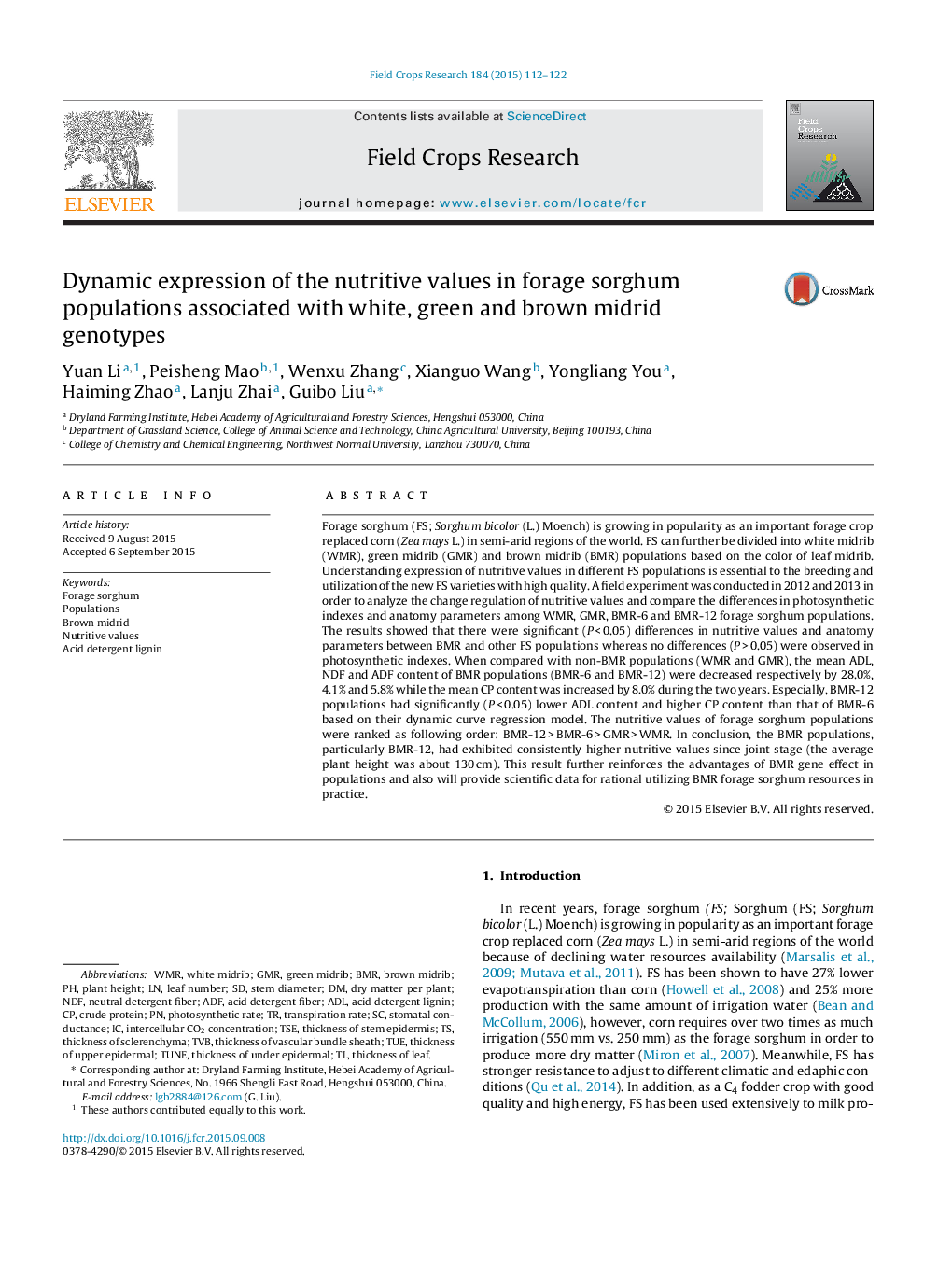| کد مقاله | کد نشریه | سال انتشار | مقاله انگلیسی | نسخه تمام متن |
|---|---|---|---|---|
| 6374646 | 1624679 | 2015 | 11 صفحه PDF | دانلود رایگان |
عنوان انگلیسی مقاله ISI
Dynamic expression of the nutritive values in forage sorghum populations associated with white, green and brown midrid genotypes
ترجمه فارسی عنوان
بیان پویا ارزش های تغذیه ای در جمع آوری علوفه سورگوم با ژنوتیپ های سفید، سبز و قهوه ای
دانلود مقاله + سفارش ترجمه
دانلود مقاله ISI انگلیسی
رایگان برای ایرانیان
کلمات کلیدی
ADLADFTVBTUENDFGMRTSEBMRplant height - ارتفاع گیاهacid detergent fiber - الیاف پاک کننده اسیدTune - اهنگPopulations - جمعیت هاPhotosynthetic rate - سرعت فتوسنتزیLeaf number - شماره برگForage sorghum - علوفه سورگومintercellular CO2 concentration - غلظت CO2 بین سلولیneutral detergent fiber - فیبر مواد شوینده خنثیStem diameter - قطر ساقهBrown midrib - قهوه ای مایل به قرمزacid detergent lignin - لیگنین پاک کننده اسیدtranspiration rate - نرخ تنفسStomatal conductance - هدایت گرمایشیcrude protein - پروتئین خام
موضوعات مرتبط
علوم زیستی و بیوفناوری
علوم کشاورزی و بیولوژیک
علوم زراعت و اصلاح نباتات
چکیده انگلیسی
Forage sorghum (FS; Sorghum bicolor (L.) Moench) is growing in popularity as an important forage crop replaced corn (Zea mays L.) in semi-arid regions of the world. FS can further be divided into white midrib (WMR), green midrib (GMR) and brown midrib (BMR) populations based on the color of leaf midrib. Understanding expression of nutritive values in different FS populations is essential to the breeding and utilization of the new FS varieties with high quality. A field experiment was conducted in 2012 and 2013 in order to analyze the change regulation of nutritive values and compare the differences in photosynthetic indexes and anatomy parameters among WMR, GMR, BMR-6 and BMR-12 forage sorghum populations. The results showed that there were significant (PÂ <Â 0.05) differences in nutritive values and anatomy parameters between BMR and other FS populations whereas no differences (PÂ >Â 0.05) were observed in photosynthetic indexes. When compared with non-BMR populations (WMR and GMR), the mean ADL, NDF and ADF content of BMR populations (BMR-6 and BMR-12) were decreased respectively by 28.0%, 4.1% and 5.8% while the mean CP content was increased by 8.0% during the two years. Especially, BMR-12 populations had significantly (PÂ <Â 0.05) lower ADL content and higher CP content than that of BMR-6 based on their dynamic curve regression model. The nutritive values of forage sorghum populations were ranked as following order: BMR-12Â >Â BMR-6Â >Â GMRÂ >Â WMR. In conclusion, the BMR populations, particularly BMR-12, had exhibited consistently higher nutritive values since joint stage (the average plant height was about 130Â cm). This result further reinforces the advantages of BMR gene effect in populations and also will provide scientific data for rational utilizing BMR forage sorghum resources in practice.
ناشر
Database: Elsevier - ScienceDirect (ساینس دایرکت)
Journal: Field Crops Research - Volume 184, December 2015, Pages 112-122
Journal: Field Crops Research - Volume 184, December 2015, Pages 112-122
نویسندگان
Yuan Li, Peisheng Mao, Wenxu Zhang, Xianguo Wang, Yongliang You, Haiming Zhao, Lanju Zhai, Guibo Liu,
